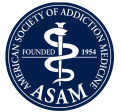Prescription opioids for pain are like a double-edged sword. Highly effective, their risks are also well-documented and come at a high price. If you’ve ever wondered, “Are opioids addictive?” the answer is undeniably yes. The American Medical Association (AMA) says that an estimated 3% to 19% of people who take prescription pain medications like Vicodin, Percocet or fentanyl develop addictions to them.
And in 2022, 108,000 people died from opioid overdoses, 76% of them from fentanyl, notes the U.S. Centers for Disease Control and Prevention.
Since there are no non-addictive opioids, the ongoing opioid crisis makes it clear that there’s a growing need for alternatives that strike a balance between managing pain and minimizing the dangers. If you’re prone to chronic pain or will be having surgery that might necessitate pain medication, it’s understandable to want safe painkillers to minimize addiction risk.
Is Journavx the answer? The new non-opioid pain medication recently entered the prescription pain management conversation after receiving approval this week by the U.S. Food & Drug Administration. Can it truly replace opioids for pain management? Read on to learn more.
What Is Journavx?
Journavx is the brand name for suzetrigine, marketed as a new type of non-opioid pain medication for treating moderate-to-severe acute pain without the pitfalls of traditional opioids.
Makers of suzetrigine, along with the medical community, claim that Journavx is a pain medication that isn’t addictive because it blocks pain signals outside the brain and doesn’t interfere with the brain’s opioid receptors — the main area where opioids produce the euphoric effects that can lead to addiction.
The FDA touts the approval of Journavx as a game-changer in the development of non-addictive pain treatment. But is it truly a safer alternative, and does it manage pain well without risks?
Does Journavx Work?
According to the FDA’s January 30 press release announcing the approval of Journavx, clinical trials have claimed Journavx is effective in curbing acute surgical pain, short-term pain normally treated with analgesics that can often contain opioids.
Two randomized, double-blind, placebo- and active-controlled studies using suzetrigine were recently conducted on more than 2,000 patients with moderate-to-severe post-surgical pain. They were divided into three groups — one administered Journavx (a two 50mg-pill dose followed by one 50mg-tablet every 12 hours), the other Vicodin (the brand name for opioid hydrocodone) and the third, a placebo (a sugar pill).
In the first trial, patients had either undergone an abdominoplasty (a tummy tuck) and in the second, a bunionectomy (a bunion removal). According to a report by Yale Medicine and Journavx, in trial 1 (abdominoplasty), patients reported their average pain reduction with Journavx was 48.4 points better than the placebo, and in trial 2 (bunionectomy), 29.3 points better.
However, suzetrigine was not more effective at reducing pain intensity than the Vicodin or ibuprofen, a “rescue” pain medication they were allowed to use if needed.
How Does Journavx Work for Pain Management?
Opioids for pain work to alter your perception of pain when they bind to the brain’s opioid receptors. But a drug like Journavx — hoped to be part of a new wave of non-addictive pain killers — works by blocking sodium channels in your peripheral nervous system, preventing your body from sending pain messages to the spinal cord and brain.
“Sodium channel blockers are substances that stop sodium channels from operating, preventing the nerves from sending pain messages to the brain as effectively, which can reduce or eliminate pain,” notes Yale Medicine.
When you experience an injury, sodium channels in nerve cells open, allowing electrical impulses to transmit pain signals to the brain. As Journavx’s active ingredient, suzetrigine works to selectively block NaV1.8, a particular sodium channel that lives on pain-sensing neurons.
NaV1.8, notes Journavx.com, is not related to addiction and interacts with the drug in a completely different fashion than an opioid does with the brain’s addictive-prone opioid receptors.
According to the school, Journavx isn’t the first sodium channel blocker pain medication. Novocaine, notes a school report, widely used in dental surgery as an anesthetic, also blocks pain perception via sodium channels, but not selectively.
Reach Out for Help With Addiction and Co-Occurring Mental Health Disorders
Are you struggling with substance abuse and mental illness?
Royal Life Centers at the Haven Detox is here to help you recover. Because We Care.
Journavx vs Other Non-Opioid Pain Medication
There are already several non-opioid pain medications on the market, both prescription and over-the-counter, including acetaminophen (Tylenol), non-steroidal anti-inflammatory drugs, or NSAIDs, such as aspirin, ibuprofen (Advil, Motrin) or naproxen (Aleve) and certain antidepressants, anesthetics and nerve pain medications that aren’t deemed addictive.
How does Journavx, considered a pain medication that isn’t addictive, compare and stack up against them? Here are some reasons why it may stand out with what we know so far:
- Journavx provides non-opioid pain medication relief with no known addiction risks so far.
- Unlike NSAIDs, Journavx has no risk of gastrointestinal bleeding or kidney damage carried by aspirin or ibuprofen.
- It avoids liver damage risks that can come from acetaminophen overdose.
- It specifically targets pain at the nerve level, unlike the above drugs, which are more appropriate for mild to moderate acute pain.
What Are the Benefits and Risks of Journavx?
- A non-opioid pain medication: Unlike its opioid counterparts, Journavx carries no risk of dependence.
- No withdrawal symptoms: Stopping non-addictive pain killers like suzetrigine means no triggering withdrawal or need to detox from the drug.
- Effective pain relief: The Journavx clinical trials noted that it worked as well as opioids for acute pain that was moderate to severe on a scale from 4 to 10.
- Safer than alternatives: As noted in the section above, Journavx doesn’t tax other vital organs or create stomach ulcers, kidney damage or liver toxicity with extended use.
- No risk of respiratory trouble: Unlike opioids, which are known to suppress breathing and block air from entering your lungs, suzetrigine doesn’t pose this risk.
Risks of Journavx
In its clinical study, Journavx.com notes that patients in the clinical trials reported minor adverse side effects to taking the drug, including:
- Itching (2.1%)
- Muscle spasms (1.3%)
- Mild rashes (1.1%)
- An increase in creatine phosphokinase, a blood enzyme (1.1%)
Journavx, says the FDA, should also not be taken with strong CYP3A inhibitors or consumed with grapefruit products to avoid negative reactions. “Journavx may temporarily reduce the chance of women becoming pregnant while on treatment,” notes the drug’s site.
The Dangers of Opioid Pain Medication
There’s no doubt that the development of suzetrigine and Journavx was driven by a need to curb opioid addiction and overdose rates, and to find a safer, non-dependency-forming alternative for pain management. And there’s no denying that opioids for pain work as they say.
But for people prone to addiction (whether you’re predisposed to it or have been in recovery), opioids can become more physically, emotionally and mentally more dangerous than the pain they seek to eliminate. Let’s review what makes them risky:
- High addiction potential: Beyond their intended pain relief, opioids can create a euphoric high that leads many users to seek out more, raising the risk of dependence.
- Tolerance and withdrawal: Addiction happens when over time, you need more of the drug to achieve the same effect. But if you stop, it can lead to withdrawal symptoms; for opioids, these can include muscle aches, abdominal cramps, agitation, anxiety, nausea and vomiting, chills, diarrhea and others, according to the National Institute on Drug Abuse (NIDA).
- Overdose risks: “Opioids can slow breathing to life-threatening levels,” says NIDA. With not enough oxygen reaching the brain, opioid overdose can cause severe brain damage or fatal respiratory depression.
- Mental health impact: Opioid use can contribute to depression, anxiety, cognitive impairment or even sexual dysfunction, says the NIDA.
Finding an Opioid Use Disorder Treatment Facility
The 2025 approval of Journavx may represent a clear turning point in pain management without the use of opioids.
“(The January 30 Journavx) approval is an important public health milestone in acute pain management,” Dr. Jacqueline Corrigan-Curay, acting director of the FDA’s Center for Drug Evaluation and Research, says in the FDA press release. “A new non-opioid analgesic therapeutic class for acute pain offers an opportunity to mitigate certain risks associated with using an opioid for pain and provides patients with another treatment option.”
However, opioid abuse is still a very real and tangible problem. Over 10 million people misuse opioids every year, with opioids playing a role in seven out of 10 overdose deaths, according to the National Center for Drug Abuse Statistics.
Non-addictive drugs like Journavx may eventually begin to reverse these numbers, but while opioid addiction exists, opioid use disorder treatment is still a necessity. If you or a loved one has developed a dependence on fentanyl, morphine, oxycodone or another opioid, help is available — and recovery is possible.
Our Lacey, WA facility, The Haven, offers a full opioid rehab track consisting of various programming to address the physical and psychological aspects of opioid addiction, plus treatment to prevent relapse, including:
- An initial period of medical detox helps to manage opioid withdrawal symptoms safely.
- Medication-assisted treatment (MAT) — using drugs such as methadone or naltrexone — can be administered under close medical supervision to assist detox and recovery.
- For more severe instances of opioid addiction, residential inpatient programs are available, allowing you to devote full-time focus to intensive therapy and counseling.
- Dual diagnosis treatment is also available if you have a co-occurring opioid use and mental health disorder at the same time.
- Holistic and behavioral therapies — from mindfulness meditation to cognitive behavioral therapy, or CBT — help to address the root causes of addiction and heal you inwardly and outwardly.
Make the change you want to see and consider seeking treatment for opioids. Start by taking our 5-step self-assessment. And if you have any questions about Royal Life Centers, The Haven, what happens during treatment, the cost of rehab and if insurance coverage will apply, don’t hesitate to contact us. We’re available by phone or email, 24/7.
We can provide you the support you need to overcome opioid use disorder.
Psychiatry.org – Opioid Use Disorder
Understanding the Opioid Overdose Epidemic
FDA Approves Non-Opioid Pain Medication Suzetrigine (Journavx™) – News – Yale Medicine
FDA Approves Novel Non-Opioid Treatment for Moderate to Severe Acute Pain
Journavx: Uses, Dosage, Side Effects, Warnings – Drugs.com
Non-Opioid Treatment for Chronic Pain | Made for This Moment
Opioids | Johns Hopkins Medicine.
- How Drugs of Addiction Act on the Limbic System: The Brain’s Reward Circuit - June 17, 2025
- Alcohol Detox in Washington State: Everything You Need to Know - May 29, 2025
- 5 Truths About Dating in Recovery - May 15, 2025
























